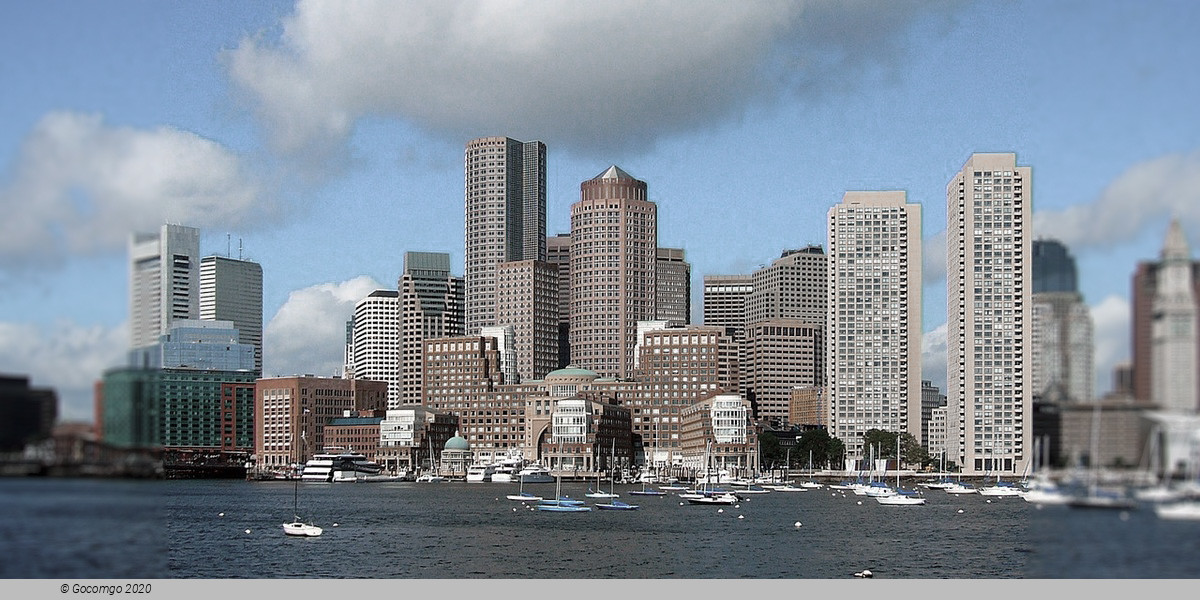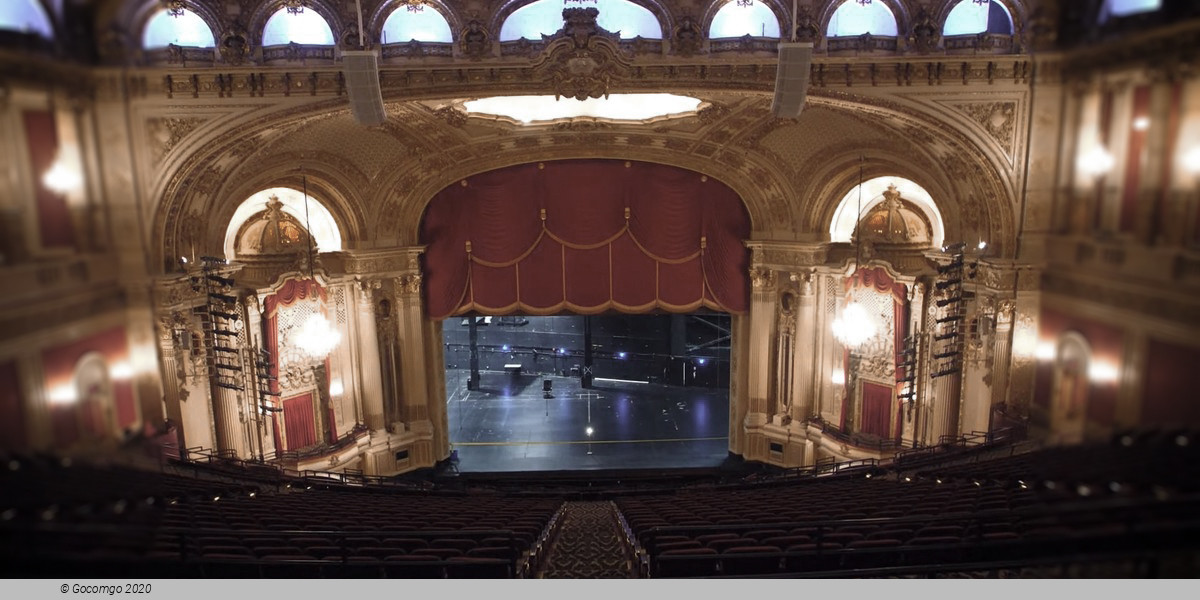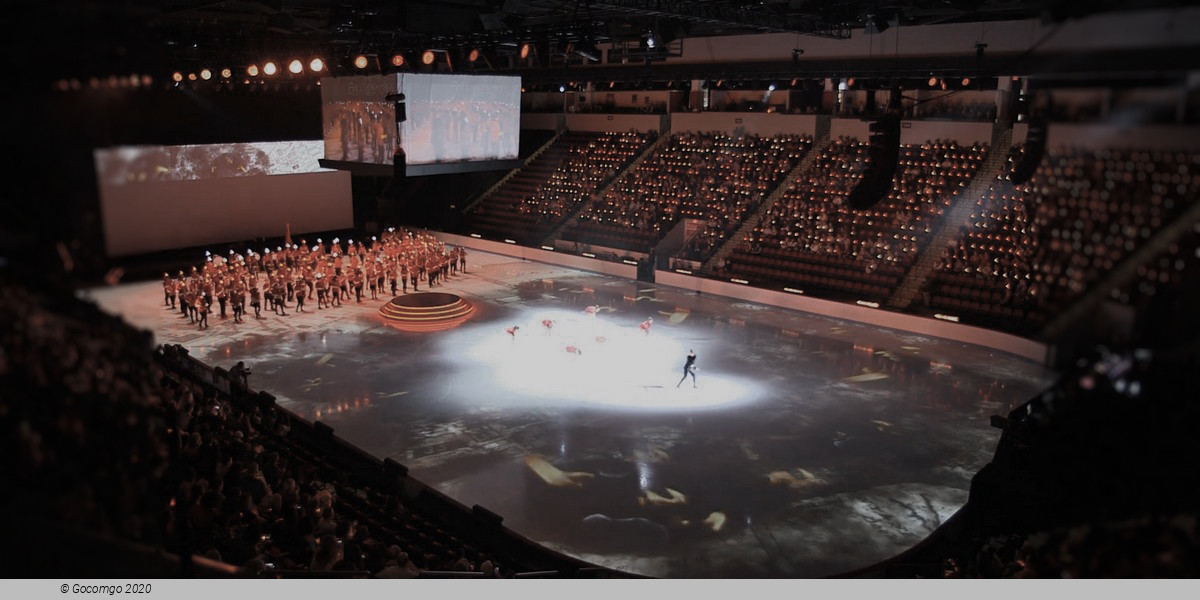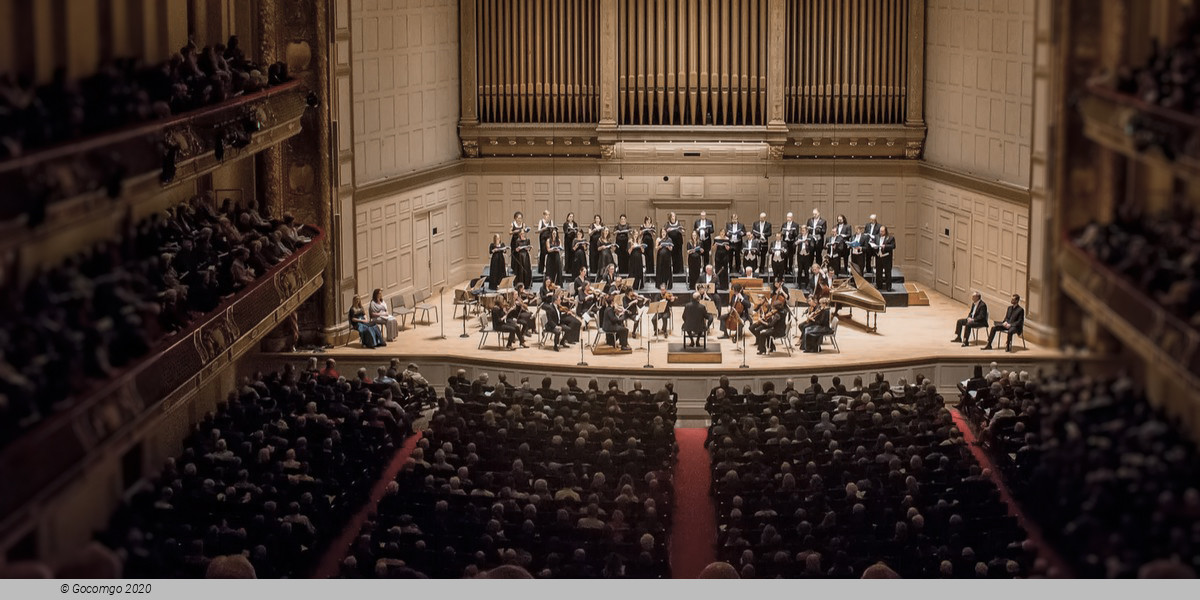Venues in Boston

Boston is the capital and most populous city of the Commonwealth of Massachusetts in the United States and the 21st most populous city in the United States. The city is the economic and cultural anchor of a substantially larger metropolitan area known as Greater Boston, a metropolitan statistical area (MSA) home to a census-estimated 4.8 million people in 2016 and ranking as the tenth-largest MSA in the country. As a combined statistical area (CSA), this wider commuting region is home to some 8.2 million people, making it the sixth most populous in the United States.
History
Colonial
Boston's early European settlers had first called the area Trimountaine (after its "three mountains", only traces of which remain today) but later renamed it Boston after Boston, Lincolnshire, England, the origin of several prominent colonists. The renaming on September 7, 1630 (Old Style), was by Puritan colonists from England who had moved over from Charlestown earlier that year in quest for fresh water. Their settlement was initially limited to the Shawmut Peninsula, at that time surrounded by the Massachusetts Bay and Charles River and connected to the mainland by a narrow isthmus. The peninsula is thought to have been inhabited as early as 4000 BC.
In 1629, the Massachusetts Bay Colony's first governor John Winthrop led the signing of the Cambridge Agreement, a key founding document of the city. Puritan ethics and their focus on education influenced its early history; America's first public school, Boston Latin School, was founded in Boston in 1635.
John Hull and the pine tree shilling played a central role in the establishment of the Massachusetts Bay Colony and the Old South Church in the 1600s. In 1652 the Massachusetts legislature authorized John Hull to produce coinage. "The Hull Mint produced several denominations of silver coinage, including the pine tree shilling, for over 30 years until the political and economic situation made operating the mint no longer practical." King Charles II for reasons which were mostly political deemed the "Hull Mint" high treason which had a punishment of being hung, drawn and quartered. "On April 6, 1681, Edward Randolph petitioned the king, informing him the colony was still pressing their own coins which he saw as high treason and believed it was enough to void the charter. He asked that a writ of Quo warranto (a legal action requiring the defendant to show what authority they have for exercising some right, power, or franchise they claim to hold) be issued against Massachusetts for the violations."
Boston was the largest town in the Thirteen Colonies until Philadelphia outgrew it in the mid-18th century. Boston's oceanfront location made it a lively port, and the city primarily engaged in shipping and fishing during its colonial days. However, Boston stagnated in the decades prior to the Revolution. By the mid-18th century, New York City and Philadelphia surpassed Boston in wealth. During this period, Boston encountered financial difficulties even as other cities in New England grew rapidly.
Revolution and the Siege of Boston
The weather continuing boisterous the next day and night, giving the enemy time to improve their works, to bring up their cannon, and to put themselves in such a state of defence, that I could promise myself little success in attacking them under all the disadvantages I had to encounter.
Many of the crucial events of the American Revolution occurred in or near Boston. Boston's penchant for mob action along with the colonists' growing lack of faith in either Britain or its Parliament fostered a revolutionary spirit in the city. When the British parliament passed the Stamp Act in 1765, a Boston mob ravaged the homes of Andrew Oliver, the official tasked with enforcing the Act, and Thomas Hutchinson, then the Lieutenant Governor of Massachusetts. The British sent two regiments to Boston in 1768 in an attempt to quell the angry colonists. This did not sit well with the colonists. In 1770, during the Boston Massacre, British troops shot into a crowd that had started to violently harass them. The colonists compelled the British to withdraw their troops. The event was widely publicized and fueled a revolutionary movement in America.
In 1773, Parliament passed the Tea Act. Many of the colonists saw the act as an attempt to force them to accept the taxes established by the Townshend Acts. The act prompted the Boston Tea Party, where a group of angered Bostonian citizens threw an entire shipment of tea sent by the East India Company into Boston Harbor. The Boston Tea Party was a key event leading up to the revolution, as the British government responded furiously with the Coercive Acts, demanding compensation for the destroyed tea from the Bostonians. This angered the colonists further and led to the American Revolutionary War. The war began in the area surrounding Boston with the Battles of Lexington and Concord.
Boston itself was besieged for almost a year during the Siege of Boston, which began on April 19, 1775. The New England militia impeded the movement of the British Army. Sir William Howe, then the commander-in-chief of the British forces in North America, led the British army in the siege. On June 17, the British captured the Charlestown peninsula in Boston, during the Battle of Bunker Hill. The British army outnumbered the militia stationed there, but it was a pyrrhic victory for the British because their army suffered irreplaceable casualties. It was also a testament to the skill and training of the militia, as their stubborn defence made it difficult for the British to capture Charlestown without suffering further irreplaceable casualties.
Several weeks later, George Washington took over the militia after the Continental Congress established the Continental Army to unify the revolutionary effort. Both sides faced difficulties and supply shortages in the siege, and the fighting was limited to small-scale raids and skirmishes. The narrow Boston Neck, which at that time was only about a hundred feet wide, impeded Washington's ability to invade Boston, and a long stalemate ensued. A young officer, Rufus Putnam, came up with a plan to make portable fortifications out of wood that could be erected on the frozen ground under cover of darkness. Putnam supervised this effort, which successfully installed both the fortifications and dozens of cannon on Dorchester Heights that Henry Knox had laboriously brought through the snow from Fort Ticonderoga. The astonished British awoke the next morning to see a large array of cannons bearing down on them. General Howe is believed to have said that the Americans had done more in one night than his army could have done in six months. The British Army attempted a cannon barrage for two hours, but their shot could not reach the colonists' cannons at such a height. The British gave up, boarded their ships and sailed away. Boston still celebrates "Evacuation Day" each year. Washington was so impressed, he made Rufus Putnam his chief engineer.
Post-revolution and the War of 1812
After the Revolution, Boston's long seafaring tradition helped make it one of the world's wealthiest international ports, with the slave trade, rum, fish, salt, and tobacco being particularly important. Boston's harbor activity was significantly curtailed by the Embargo Act of 1807 (adopted during the Napoleonic Wars) and the War of 1812. Foreign trade returned after these hostilities, but Boston's merchants had found alternatives for their capital investments in the interim. Manufacturing became an important component of the city's economy, and the city's industrial manufacturing overtook international trade in economic importance by the mid-19th century. A network of small rivers bordering the city and connecting it to the surrounding region facilitated shipment of goods and led to a proliferation of mills and factories. Later, a dense network of railroads furthered the region's industry and commerce.
During this period, Boston flourished culturally, as well, admired for its rarefied literary life and generous artistic patronage, with members of old Boston families—eventually dubbed Boston Brahmins—coming to be regarded as the nation's social and cultural elites.
Boston was an early port of the Atlantic triangular slave trade in the New England colonies, but was soon overtaken by Salem, Massachusetts and Newport, Rhode Island. Boston eventually became a center of the abolitionist movement. The city reacted strongly to the Fugitive Slave Act of 1850, contributing to President Franklin Pierce's attempt to make an example of Boston after the Anthony Burns Fugitive Slave Case.
In 1822, the citizens of Boston voted to change the official name from the "Town of Boston" to the "City of Boston", and on March 19, 1822, the people of Boston accepted the charter incorporating the city. At the time Boston was chartered as a city, the population was about 46,226, while the area of the city was only 4.8 square miles (12 km2).
19th century
In the 1820s, Boston's population grew rapidly, and the city's ethnic composition changed dramatically with the first wave of European immigrants. Irish immigrants dominated the first wave of newcomers during this period, especially following the Great Famine; by 1850, about 35,000 Irish lived in Boston. In the latter half of the 19th century, the city saw increasing numbers of Irish, Germans, Lebanese, Syrians, French Canadians, and Russian and Polish Jews settling in the city. By the end of the 19th century, Boston's core neighborhoods had become enclaves of ethnically distinct immigrants with their residence yielding lasting cultural change. Italians became the largest inhabitants of the North End, Irish dominated South Boston and Charlestown, and Russian Jews lived in the West End. Irish and Italian immigrants brought with them Roman Catholicism. Currently, Catholics make up Boston's largest religious community, and the Irish have played a major role in Boston politics since the early 20th century; prominent figures include the Kennedys, Tip O'Neill, and John F. Fitzgerald.
Between 1631 and 1890, the city tripled its area through land reclamation by filling in marshes, mud flats, and gaps between wharves along the waterfront. The largest reclamation efforts took place during the 19th century; beginning in 1807, the crown of Beacon Hill was used to fill in a 50-acre (20 ha) mill pond that later became the Haymarket Square area. The present-day State House sits atop this lowered Beacon Hill. Reclamation projects in the middle of the century created significant parts of the South End, the West End, the Financial District, and Chinatown.
After the Great Boston fire of 1872, workers used building rubble as landfill along the downtown waterfront. During the mid-to-late 19th century, workers filled almost 600 acres (2.4 km2) of brackish Charles River marshlands west of Boston Common with gravel brought by rail from the hills of Needham Heights. The city annexed the adjacent towns of South Boston (1804), East Boston (1836), Roxbury (1868), Dorchester (including present-day Mattapan and a portion of South Boston) (1870), Brighton (including present-day Allston) (1874), West Roxbury (including present-day Jamaica Plain and Roslindale) (1874), Charlestown (1874), and Hyde Park (1912). Other proposals were unsuccessful for the annexation of Brookline, Cambridge, and Chelsea.
Early 20th century
Fenway Park, home of the Boston Red Sox, opened in 1912.
Many architecturally significant buildings were built during these early years of the 20th century: Horticultural Hall, the Tennis and Racquet Club, Isabella Stewart Gardner Museum, Fenway Studios, Jordan Hall, and the Boston Opera House. The Longfellow Bridge, built in 1906, was mentioned by Robert McCloskey in Make Way for Ducklings, describing its "salt and pepper shakers" feature.
Logan International Airport opened on September 8, 1923. The Boston Bruins were founded in 1924 and played their first game at Boston Garden in November 1928.
Boston went into decline by the early to mid-20th century, as factories became old and obsolete and businesses moved out of the region for cheaper labor elsewhere. Boston responded by initiating various urban renewal projects, under the direction of the Boston Redevelopment Authority (BRA) established in 1957. In 1958, BRA initiated a project to improve the historic West End neighborhood. Extensive demolition was met with strong public opposition, and thousands of families were displaced.
The BRA continued implementing eminent domain projects, including the clearance of the vibrant Scollay Square area for construction of the modernist style Government Center. In 1965, the Columbia Point Health Center opened in the Dorchester neighborhood, the first Community Health Center in the United States. It mostly served the massive Columbia Point public housing complex adjoining it, which was built in 1953. The health center is still in operation and was rededicated in 1990 as the Geiger-Gibson Community Health Center. The Columbia Point complex itself was redeveloped and revitalized from 1984 to 1990 into a mixed-income residential development called Harbor Point Apartments.
By the 1970s, the city's economy had begun to recover after 30 years of economic downturn. A large number of high-rises were constructed in the Financial District and in Boston's Back Bay during this period. This boom continued into the mid-1980s and resumed after a few pauses. Hospitals such as Massachusetts General Hospital, Beth Israel Deaconess Medical Center, and Brigham and Women's Hospital lead the nation in medical innovation and patient care. Schools such as the Boston Architectural College, Boston College, Boston University, the Harvard Medical School, Tufts University School of Medicine, Northeastern University, Massachusetts College of Art and Design, Wentworth Institute of Technology, Berklee College of Music, the Boston Conservatory, and many others attract students to the area. Nevertheless, the city experienced conflict starting in 1974 over desegregation busing, which resulted in unrest and violence around public schools throughout the mid-1970s.
21st century
Boston is an intellectual, technological, and political center but has lost some important regional institutions, including the loss to mergers and acquisitions of local financial institutions such as FleetBoston Financial, which was acquired by Charlotte-based Bank of America in 2004. Boston-based department stores Jordan Marsh and Filene's have both merged into the New York City–based Macy's. The 1993 acquisition of The Boston Globe by The New York Times was reversed in 2013 when it was re-sold to Boston businessman John W. Henry. In 2016, it was announced General Electric would be moving its corporate headquarters from Connecticut to the Seaport District in Boston, joining many other companies in this rapidly developing neighborhood.
Boston has experienced gentrification in the latter half of the 20th century, with housing prices increasing sharply since the 1990s. Living expenses have risen; Boston has one of the highest costs of living in the United States and was ranked the 129th-most expensive major city in the world in a 2011 survey of 214 cities. Despite cost-of-living issues, Boston ranks high on livability ratings, ranking 36th worldwide in quality of living in 2011 in a survey of 221 major cities.
On April 15, 2013, two Chechen Islamist brothers detonated a pair of bombs near the finish line of the Boston Marathon, killing three people and injuring roughly 264.
In 2016, Boston briefly shouldered a bid as the US applicant for the 2024 Summer Olympics. The bid was supported by the mayor and a coalition of business leaders and local philanthropists, but was eventually dropped due to public opposition. The USOC then selected Los Angeles to be the American candidate with Los Angeles ultimately securing the right to host the 2028 Summer Olympics.




